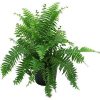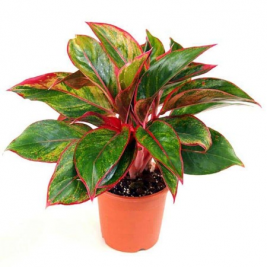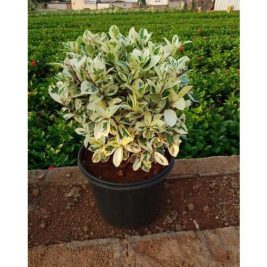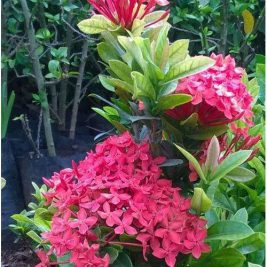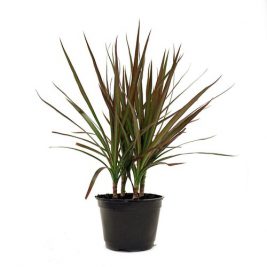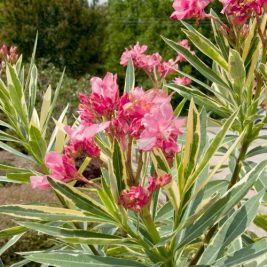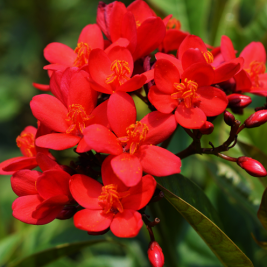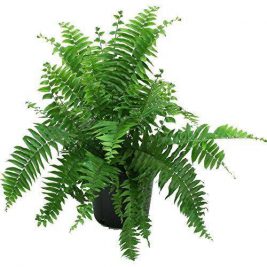-
₨1,699
pot size 12 inches
One of the easiest of all deluxe houseplants to grow, multicolored aglaonema is also one of the most stylish and exotic . A relatively new variety to the houseplant world, this stunner shows off dark green leaves elegantly flushed with bright red or pink or green , or even combines. Its colorful foliage makes multicolored aglaonema a perfect home-decor accent
-
Original price was: ₨1,699.₨1,399Current price is: ₨1,399.
Pot Size: 16 inches
Wodyetia bifurcata, the foxtail palm, is a species of palm in the family Arecaceae, native to Queensland, Australia. It is the sole species in the genus Wodyetia.Foxtails are fast growers, reaching an ultimate height of about 30 feet. They’re best suited for Zone 10, though areas of Zone 9B that closely border Zone 10 will work with normal winter temperatures.
-
Original price was: ₨1,500.₨1,300Current price is: ₨1,300.
Pot Size: 14 inches
Ficus is a genus of about 850 species of woody trees, shrubs, vines, epiphytes and hemiepiphytes in the family Moraceae. Collectively known as fig trees or figs, they are native throughout the tropics with a few species extending into the semi-warm temperate zone
-
₨999
Pot Size: 14 inches
Ixora coccinea is a species of flowering plant in the family Rubiaceae. It is a common flowering shrub native to Southern India, Bangladesh, and Sri Lanka. It has become one of the most popular flowering shrubs in South Florida gardens and landscapes. It is the national flower of Suriname
-
₨999
Each order will contain 5 pots . The price stated is of 5 pots
Pennisetum is a widespread genus of plants in the grass family, native to tropical and warm temperate regions of the world. They are known commonly as fountain grasses.
Pennisetum is easily one of the most popular and easy to grow perennial ornamental grasses. There is a pennisetum for everyone, from dwarf ornamentalgrass lovers (20″) to those looking for a tall ornamental grass (10′), upright habit or arching, tan or rose seed heads, and green or purple foliage
-
Original price was: ₨999.₨799Current price is: ₨799.
Pot size: 16 inches
Dracaena (Dracaena marginata), also known as dragon tree, is an attractive, stiff-leaved plant with green sword-like leaves edged with red. The plant has narrow, slender gray stems that are topped with shiny, arching leaves that are sword-shaped.
-
Original price was: ₨899.₨699Current price is: ₨699.
Dieffenbachia is a genus of tropical flowering plants in the family Araceae. It is native to the New World Tropics from Mexico and the West Indies south to Argentina. Some species are widely cultivated as ornamental plants, especially as houseplants, and have become naturalized on a few tropical islands
-
₨599
Height 6-7 inches
Best indoor plant for your home and office
Ficus elastica, the rubber fig, rubber bush, rubber tree, rubber plant, or Indian rubber bush, Indian rubber tree, is a species of plant in the fig genus, native to eastern parts of South Asia and southeast Asia. It has become naturalized in Sri Lanka, the West Indies, and the US State of Florida
-
₨550
Pot Size: 12 inches
Nerium oleander is a shrub or small tree in the dogbane family Apocynaceae, toxic in all its parts. It is the only species currently classified in the genus Nerium. It is most commonly known as nerium or oleander, from its superficial resemblance to the unrelated olive Olea.
-
Original price was: ₨650.₨550Current price is: ₨550.
Bougainvillea is a genus of thorny ornamental vines, bushes, or trees. The inflorescence consists of large colourful sepallike bracts which surround three simple waxy flowers. It is native to South America from Brazil west to Peru and south to southern Argentina.
-
Original price was: ₨599.₨499Current price is: ₨499.
Height : 1ft- 2.5ft
Jatropha curcas is a plant that originated in Central America and is very well adapted to harsh conditions including extremely arid deserts. It is already grown as a biofuel in some parts of the world because its seeds can produce oil.
The plant can grow well on hot weather with little rain.
Jatropha contains compounds that are highly toxic. Jatropha species have traditionally been used in basketmaking, tanning and dye production.
-
Original price was: ₨599.₨449Current price is: ₨449.
Pot Size: 9 inches
A fern is a member of a group of vascular plants that reproduce via spores and have neither seeds nor flowers. They differ from mosses by being vascular, i.e., having specialized tissues that conduct water and nutrients and in having life cycles in which the sporophyte is the dominant phase. In general, ferns are of minor economic importance to humans. However, fernsare popular horticultural plants and many species are grown in ornamental gardens or indoors
-
Contact UsYou may connect with Team Greene at 0330-3450001
-
After SalesEven after Sales, Greene is there for you !!!
-
Return PolicyIf Product has a fault, Greene Returns *(T&C)
